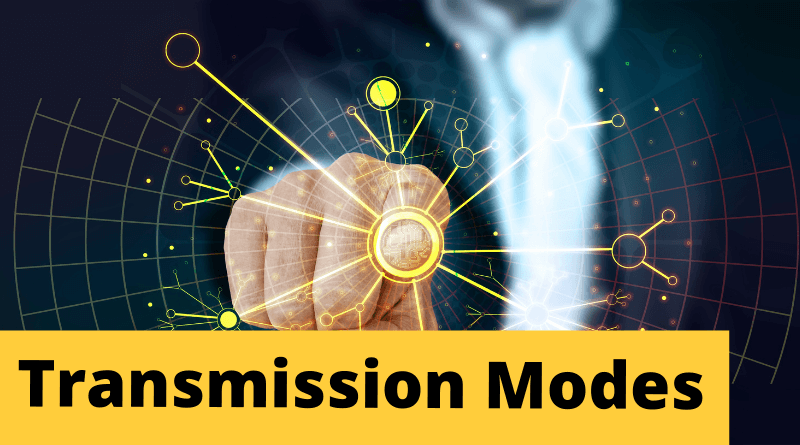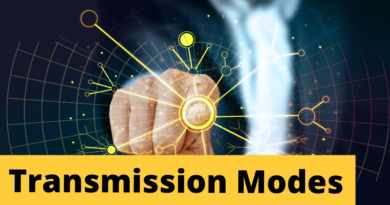Transmission Modes | Simplex, Half Duplex & Full Duplex
In this tutorial, we are going to see how communication between two machines can be done in different ways (Simplex, Half Duplex & Full Duplex).
The transmission is characterized by:
- The direction of the communication
- Transmission mode: it is the number of bits sent simultaneously
- Synchronization: it is the synchronization between transmitter and receiver
Simplex, Half Duplex & Full Duplex
According to the direction of the communication, we distinguish 3 modes of transmission:
Simplex transmission characterizes a link in which the data circulates in one direction only, i.e. from the transmitter to the receiver. This kind of link is useful when the data do not need to circulate in both directions (for example from your computer to the printer or from the mouse to the computer…).

Half Duplex transmission characterizes a connection in which data flows in one direction or the other, but not simultaneously (for example a walkie-talkie radios). Thus, with this type of link each end of the link transmits in turn. This type of connection allows a bidirectional connection using the total capacity of the line.

Full Duplex transmission characterizes a link in which data flows bidirectionally and simultaneously. This means that each end of the line can transmit and receive at the same time, which means that the bandwidth is divided by two for each data transmission direction if the same transmission medium is used for both transmissions.






